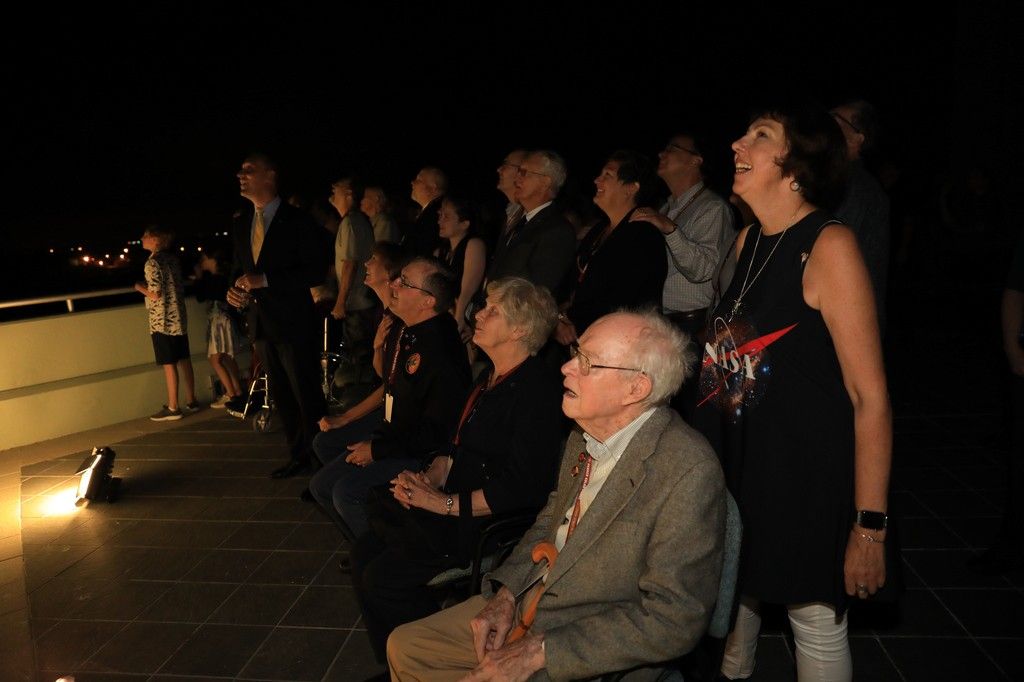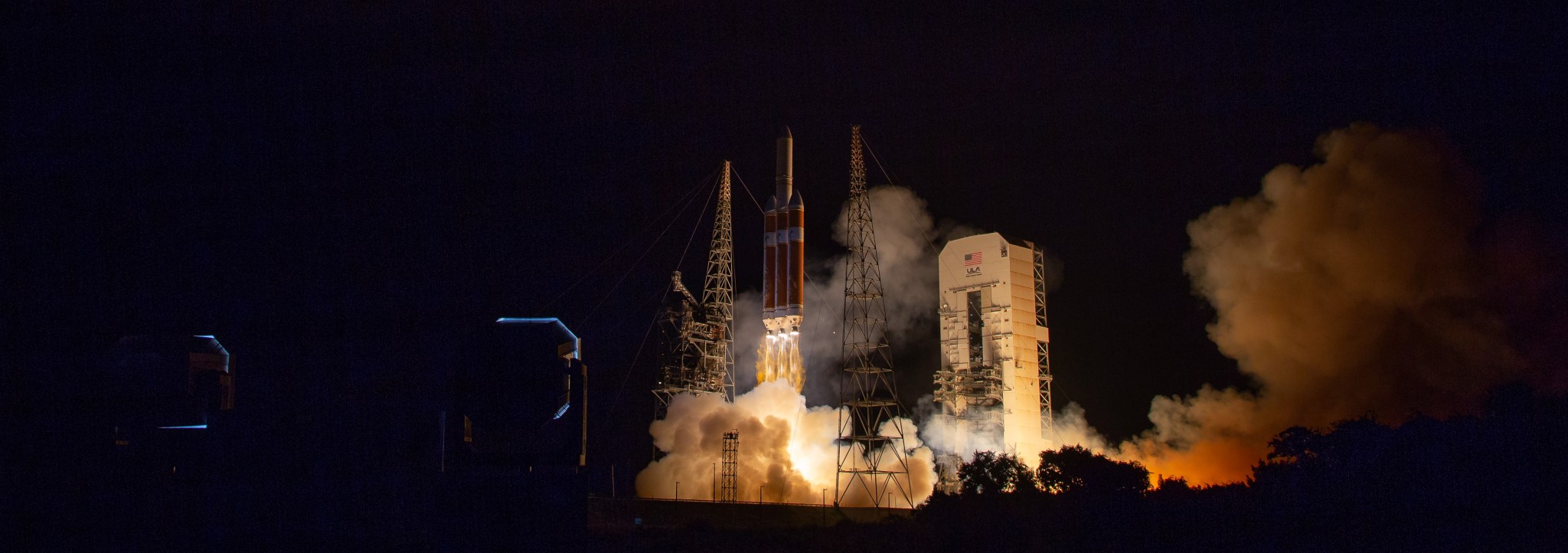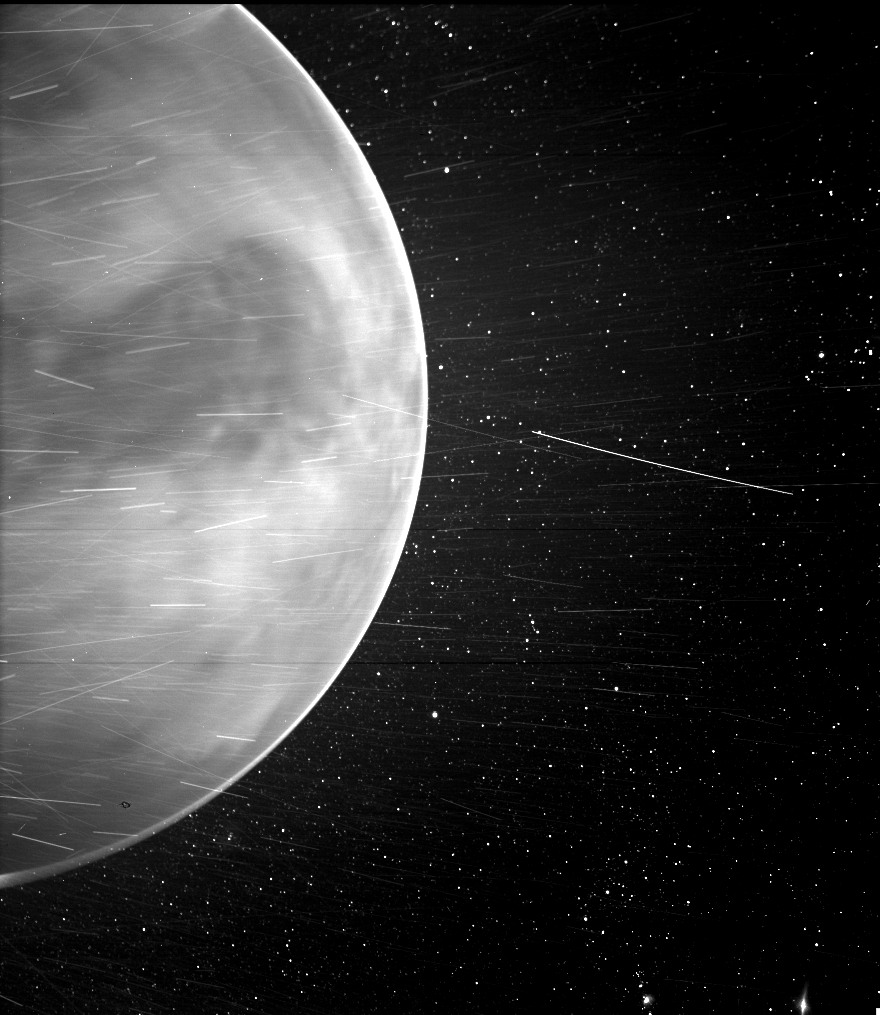On Aug. 12, 2018, NASA launched Parker Solar Probe to the Sun. It is flying closer to the Sun than any spacecraft before, and uncovering new secrets about our star. Here's what you need to know.
1. Getting to the Sun takes a lot of power
At about 1,400 pounds, Parker Solar Probe is relatively light for a spacecraft, but it launched to space aboard one of the most powerful rockets in the world, the United Launch Alliance Delta IV Heavy. That's because it takes a lot of energy to go to the Sun – in fact, 55 times more energy than it takes to go to Mars.
Any object launched from Earth starts out traveling at about the same speed and in the same direction as Earth – 67,000 mph sideways. To get close to the Sun, Parker Solar Probe had to shed much of that sideways speed, and a strong launch was a good start.
2. First stop: Venus!
On its way to the Sun, Parker Solar Probe flew by Venus on Oct. 3, 2018. This wasn't a detour to do some sightseeing. The probe performed a gravity assist at Venus to help draw its orbit closer to the Sun. Unlike most gravity assists, which help a spacecraft pick up speed, Parker slowed down so that it could swing closer to the Sun. In all, Parker Solar Probe will perform seven Venus gravity assists during its mission.
3. Closer to the Sun than ever before
Parker Solar Probe holds the record for closest approach to the Sun by a human-made object. On Oct. 29, 2018, the spacecraft broke the old record of 26.55 million miles from the Sun's surface set by the German-American Helios 2 spacecraft in April 1976.
As the Parker Solar Probe mission has progressed, the spacecraft has repeatedly broken its own records. When it made its 17th close approach to the Sun on Sept. 27, 2023, it came about 4.51 million miles (7.26 million kilometers) from the solar surface. A final close approach of 3.83 million miles from the Sun's surface expected in 2024.
4. Faster than any human-made object
Parker Solar Probe is the fastest spacecraft in history. On its final orbits, closest to the Sun, the spacecraft will reach speeds up to 430,000 mph (692,000 kph). That's fast enough to travel from New York to Tokyo in less than a minute!

5. Dr. Eugene Parker, mission namesake
Parker Solar Probe is named for Dr. Eugene Parker, the first person to predict the existence of the solar wind. In 1958, Parker developed a theory showing how the Sun’s hot corona – by then known to be millions of degrees Fahrenheit – is so hot that it overcomes the Sun’s gravity. According to the theory, the material in the corona expands continuously outwards in all directions, forming a solar wind.
Parker Solar Probe was the first NASA mission to be named for a living person, and Dr. Parker watched the launch with the mission team from Kennedy Space Center in Florida on Aug. 12, 2018. Dr. Parker died on March 15, 2022, at age 94.
6. Unlocking the secrets of the solar wind
Even though Dr. Parker predicted the existence of the solar wind 60 years ago, there's a lot about it we still don't understand. We know now that the solar wind comes in two distinct streams, fast and slow. We've identified the source of the fast solar wind, but the slow solar wind is a bigger mystery.
Before Parker Solar Probe, our only measurements of the solar wind happened near Earth, after it had tens of millions of miles to blur together, cool down and intermix. Parker's measurements of the solar wind, just a few million miles from the Sun's surface, are revealing new details to help shed light on the processes that send it speeding out into space.
7. Studying near-light speed particles
Parker Solar Probe also is studying how some particles accelerate away from the Sun at mind-boggling speeds – more than half the speed of light, or upwards of 90,000 miles per second. These particles move so fast that they can reach Earth in under half an hour, so they can interfere with electronics on board satellites with very little warning.
8. The mystery of the corona's high heat
The third big question scientists hope to answer with this mission is something scientists call the coronal heating problem. Temperatures in the Sun's corona, spike upward of 2 million degrees Fahrenheit, while the Sun's surface below simmers at a balmy 10,000°F. How the corona gets so much hotter than the surface remains one of the greatest unanswered questions in astrophysics.
Though scientists have been working on this problem for decades with measurements taken from afar, mission scientists hope measurements from within the corona itself will help solve the coronal heating problem once and for all.
9. Why won't Parker Solar Probe melt?
The corona reaches millions of degrees Fahrenheit, so how can we send a spacecraft there without it melting?
The key lies in the distinction between heat and temperature. Temperature measures how fast particles are moving, while heat is the total amount of energy that they transfer. The corona is incredibly thin, and there are very few particles there to transfer energy – so while the particles are moving fast (high temperature), they don’t actually transfer much energy to the spacecraft (low heat).
It’s like the difference between putting your hand in a hot oven versus putting it in a pot of boiling water (don’t try this at home!). In the air of the oven, your hand doesn’t get nearly as hot as it would in the much denser water of the boiling pot.
10. Engineered to thrive in an extreme environment
Make no mistake, the environment in the Sun's atmosphere is extreme – hot, awash in radiation, and very far from home – but Parker Solar Probe is engineered to survive.
The spacecraft is outfitted with a cutting-edge heat shield made of a carbon composite foam sandwiched between two carbon plates. The heat shield is so good at its job that, even though the front side will receive the full brunt of the Sun's intense light, reaching 2,500°F, the instruments behind it, in its shadow, will remain at a cozy 85°F.
Parker Solar Probe's solar panels – which provide the spacecraft's power – are retractable, but the small bit of surface area that peeks out near the Sun is enough to make them prone to overheating. So, to keep its cool, Parker Solar Probe circulates a single gallon of water through the solar arrays. The water absorbs heat as it passes behind the arrays, then radiates that heat out into space as it flows into the spacecraft’s radiator.
For much of its journey, Parker Solar Probe will be too far from home and too close to the Sun for the mission team to command it in real time – but don't worry. Along the edges of the heat shield’s shadow are seven sensors. If any of these sensors detect sunlight, they alert the central computer and the spacecraft can correct its position to keep the sensors – and the rest of the instruments – safely protected behind the heat shield.









































